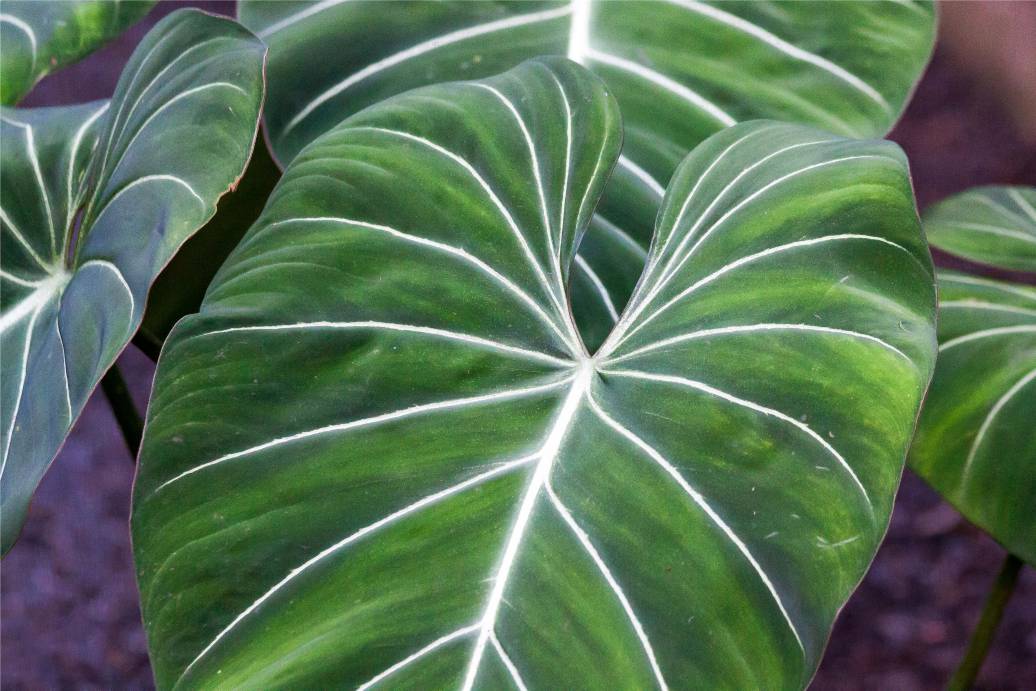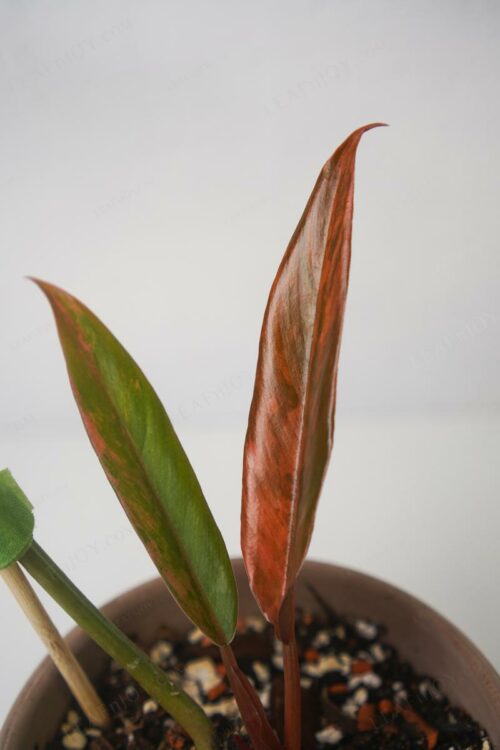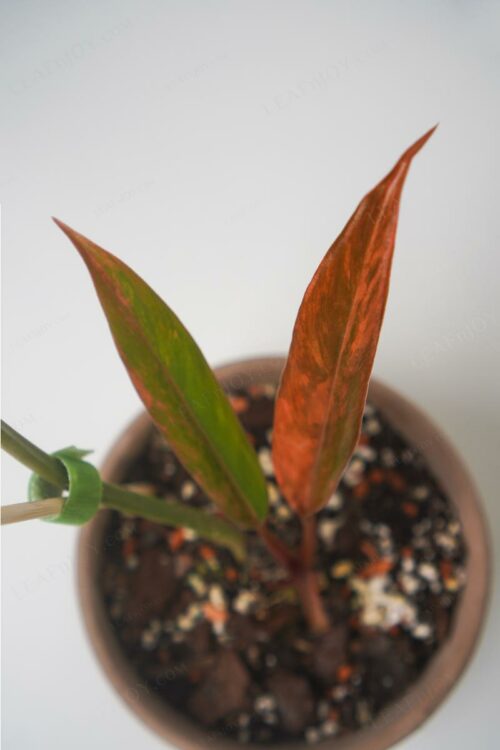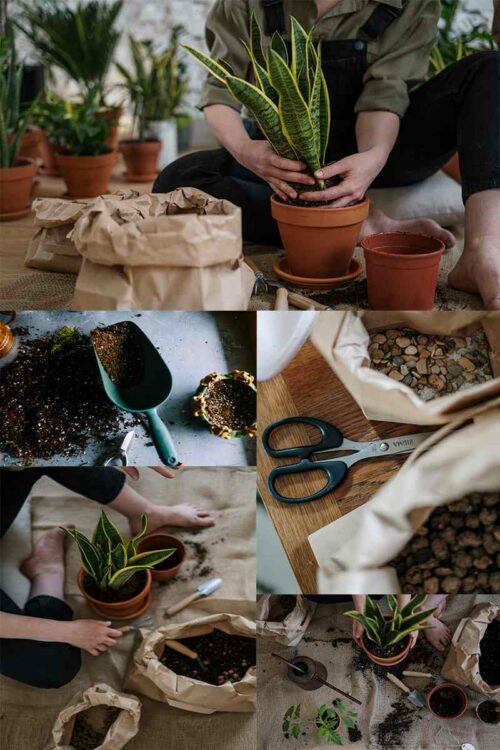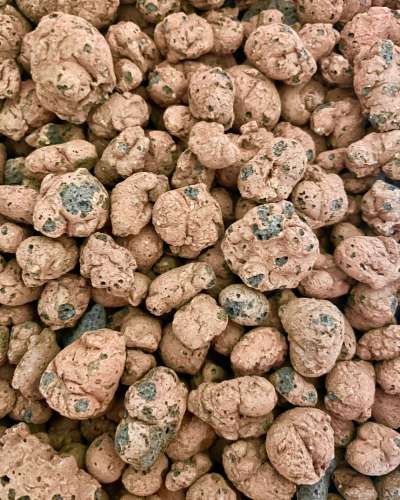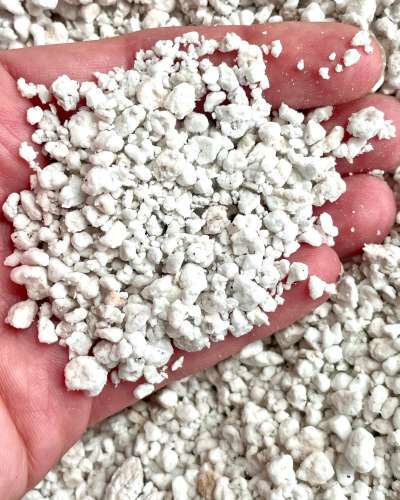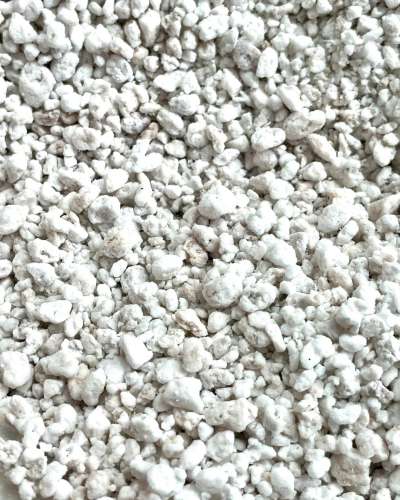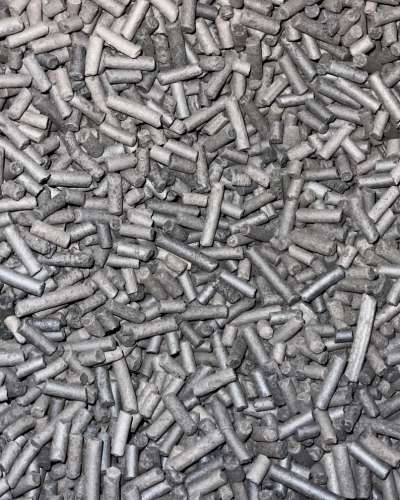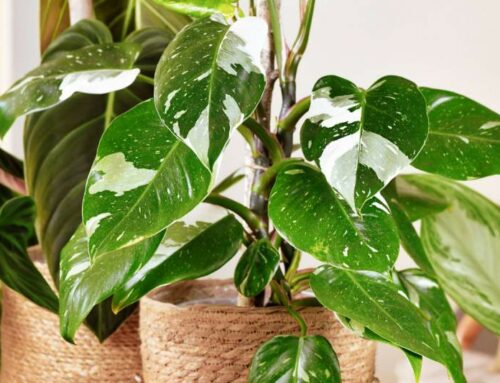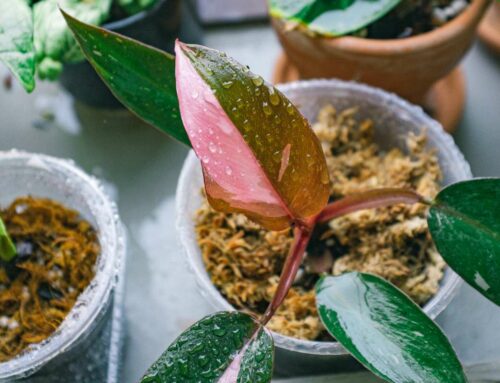How to care for a Philodendron, can a Philodendron live outside or in low light? How often do you need to water a Philodendron?
These Philodendron care related questions might be running through your mind if you recently bought this Heartleaf aroid as a houseplant or are looking into getting one. I got you.
Philodendron plants are incredibly easy to care for as they are low-maintenance houseplants that aren’t too picky about their chosen location and would easily forgive being forgotten to be watered from time to time. This complete Philodendron care guide will cover everything important that you need to know to keep your Heartleaf aroid continously growing and thriving.
What is a philodendron? Philodendron is a genus of plants, native to South America, that are part of the Araceae family (commonly called aroids). There are still many species from the genus that are yet to be named and described, due to their variability in terms of growth methods. The majority of the philodendrons grow as epiphytic (or semi-epiphytic) plants, which means that they grow on top of larger trees without harming them. This is where their name comes from as “Philodendron” means tree-loving.
Curiously, some philodendrons (although rare) grow in a terrestrial way. Terrestrial plants grow on land rather than on trees, in a crawling pattern. The infamous amongst plant collectors, Philodendron Gloriosum is one example of a terrestrially growing member of the genus.
Philodendron plants are found in many households as they are extremely easy to care for, have gorgeous foliage, grow fast, and can even reduce air pollution around them. These features make these tropical plants ideal for beginners and advanced gardeners alike.
So if you are here you are probably wondering what are the ideal growing conditions that you can provide your Philodendron with, so that your sweetheart plant can grow and thrive. Then you have come to the right place, as this detailed Philodendron care guide will cover all care requirements of this tropical plant so that you can grow it with ease at home.
This post may contain affiliate links. Read our Privacy Policy and Disclosure here.
Philodendron Care – Basic Guidelines
You can find a summary of the care needs of a Philodendron in the table below.
Common Names: Philo
Origin: Caribbean, Colombia, Venezuela
Light: medium to bright indirect light
Water: moderately – allow to slightly dry out between irrigations
PH: 5.5 – 6.5
Repot: every 2 to 3 years
Temperatures: 18°C to 28°C (64.4 °F to 82.4 °F)
Humidity: 45% to 80%
Nutrition: balanced fertilizer (eg: 10-10-10) or 3-1-2 NPK (or similiar); simple NPK fertilizer isn’t enough so ensure that micro elements are also included
Fertilize: 2 times/year with slow release fertilizer or monthly with liquid one during the growing season; don’t fertilize if the plant is not actively growing
Propagation: stem cuttings, seeds (rarely)
Pests: scale insects, spider mites and thrips
Toxic? Yes, if ingested.
Continue reading for a detailed guide on how to care for a Philodendron grown indoors.
Philodendron Plant Care: Overview
Before we proceed with this detailed Philodendron care guide, I wanted to mention two important points.
Is Monstera a Philodendron? Monsteras and Philodendrons are two different genera of plants, although being from the same Araceae family, they are not the same. Philodendrons are also called sweetheart plants or heartleaf philodendrons due to their unique leaves’ space. But let’s get two common misconceptions out of the way: 1) a philodendron is not a pothos, although their leaf shape might be similar, and 2) a Philodendron is not a Monstera, as some wrongly refer to Monstera Deliciosa as a split-leaf Philodendron.
Are all Philodendron beginer-friendly plants? Pretty much yes.
Philodendrons grow fast, don’t have a dormant period (unless it is too cold), and can be propagated with ease. And with so many different Philodendron varieties to choose from that look absolutely stunning, it’s hard to stop yourself from trying to collect them all, I know.
Philodendron plants are known to be hard to kill and can tolerate almost any light condition as long as it’s bright enough for you to read a newspaper – they can survive there. These aroid plants require medium watering and won’t throw a drama if you are a bit behind on their watering schedule.
But surviving is a different thing from thriving, so if you want to know how to make your Philodendron grow and thrive, then read on.
1. How much light does a Philodendron need?
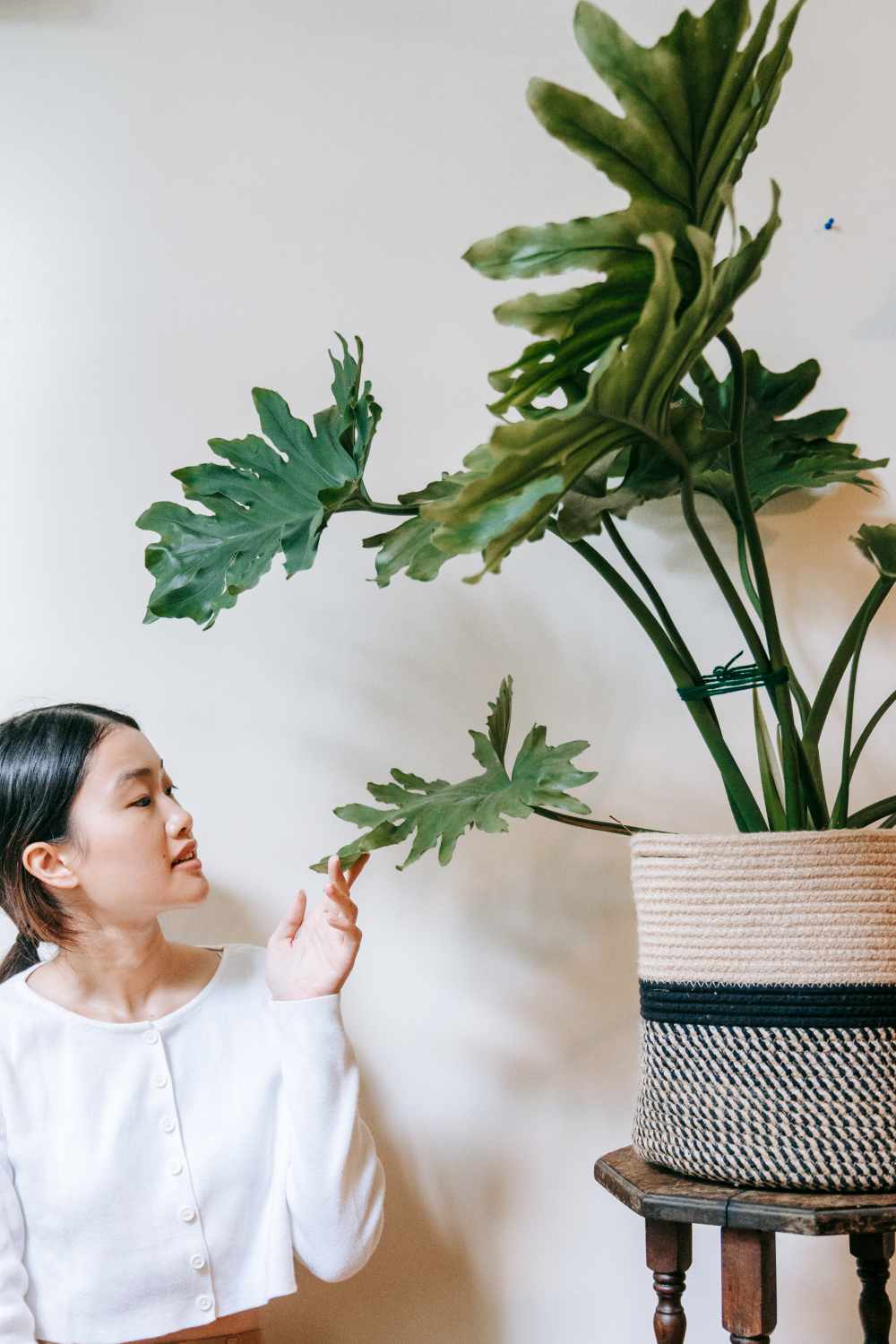
Philodendrons are generally not too picky about their location and can tolerate a low light spot. The saying from above applies – if you can read a newspaper without turning on a light, your sweetheart plant can live there.
But if you want your philodendron to thrive, grow faster, and be overall a happy plant, then provide it with a brightly lit location or consider a grow light. A place that receives bright, indirect light is the ideal growing spot for your aroid. For example, a west-facing window or a meter away from a south-facing one are great locations to choose for your Philodendron in terms of light.
Although tolerant of low light spots, the more light you give your Philodendron plant, the faster and the lusher it will grow.
How much light (PAR) does a Philodendron plant need? For optimal growth, the PPFD for Philodendron should be between 50-250 umol/m2/s. This is assuming a photo period of 12-14 hours daily.
How much lux (foot candles) do Philodendron need? A light number of about 1, 000 lux (100 foot candles) is sufficient to ensure the survival of a Philodendron. However, the optimal lux so that a Philodendron can grow and thrive should be about 4 000 lux (400 foot candles).
How to measure the strenght of a light source? You can use a light meter (lux meter) to measure the food candles, lux or PPFD of a light source. Alternatively, some smartphones apps can also be used.
But too much of a good thing can turn bad. Philodendron plants, being native to the rain forest where they grow under a canopy of trees, might get scorched if exposed to direct sunlight. So even though the more light the better for the growth of your sweetheart plant, make sure that you choose a location for your Philodendron, where it will be protected from direct exposure to sunlight, especially during the noon hours when the Sun is at its strongest. Alternatively, you can use semi-transparent curtains to filter the direct light exposure that your philodendron is receiving.
Are you confused about what bright, indirect light means? No worries. I was too at first! That’s why we have a super detailed guide (with visuals) to assist you with understanding what does bright, medium, and low light for houseplants mean. Read our Lighting Guide for Houseplants.
Note: If you have a variegated Philodendron (eg: Pink Princess, White Wizard, Caramel Marble, Florida Beauty, etc), it is a different story and a shadow (low light) location will not work for it, as variegated plants need an extra light boost.
2. How often to water a Philodendron?
Philodendrons generally prefer to slightly dry out in-between irrigations. “Slightly” being the keyword here, never let your philodendron reach a state where the roots are kept bone-dry for days, this will cause the plant to experience water-related physiological issues. If you see that the leaves on your philodendron are wilting and you haven’t watered it in days: it could use a good drink. Another sign that can indicate an under-watering problem is the wilting, crippling, and browning of new growth immediately after it starts to emerge.
On the other hand, Philodendrons can quickly suffer from root rot issues due to overwatering as not enough oxygen is getting to their roots, so wet feet should be avoided at all possible costs. Signs that your philodendron is overwatered can include: wilting and yellowing of foliage, brown spots on the leaves that have a yellow halo, edema that makes the cells in the leaves burst, and die.
The general rule when it comes to how often to water your Philodendron is: don’t rely on a schedule, always check how moist the soil is before watering. Depending on the size of the pot, check the upper 2-4cm (0.5-1.5inch) of the soil with your finger. Does it feel moist? Skip watering for a couple of days. If it’s dry – it’s time to water your Philodendron and make sure you water it until water comes out of the drainage hole. If you don’t want to get your finger dirty, consider a moisture meter although it might not work depending on the media that your Philodendron is growing in.
If you notice white build-up on the leaves of your Philodendron, the water you are using for it might be too dense on minerals and you might need to change something. Tepid water, which is not too hard and has stayed for 24 hours, or even better rainwater – is the best type of water that you can use for your Philodendron. If you want to learn more about houseplants and watering them, check out our Watering Houseplants Guide.
3. What is the Best Potting Mix for a Philodendron?
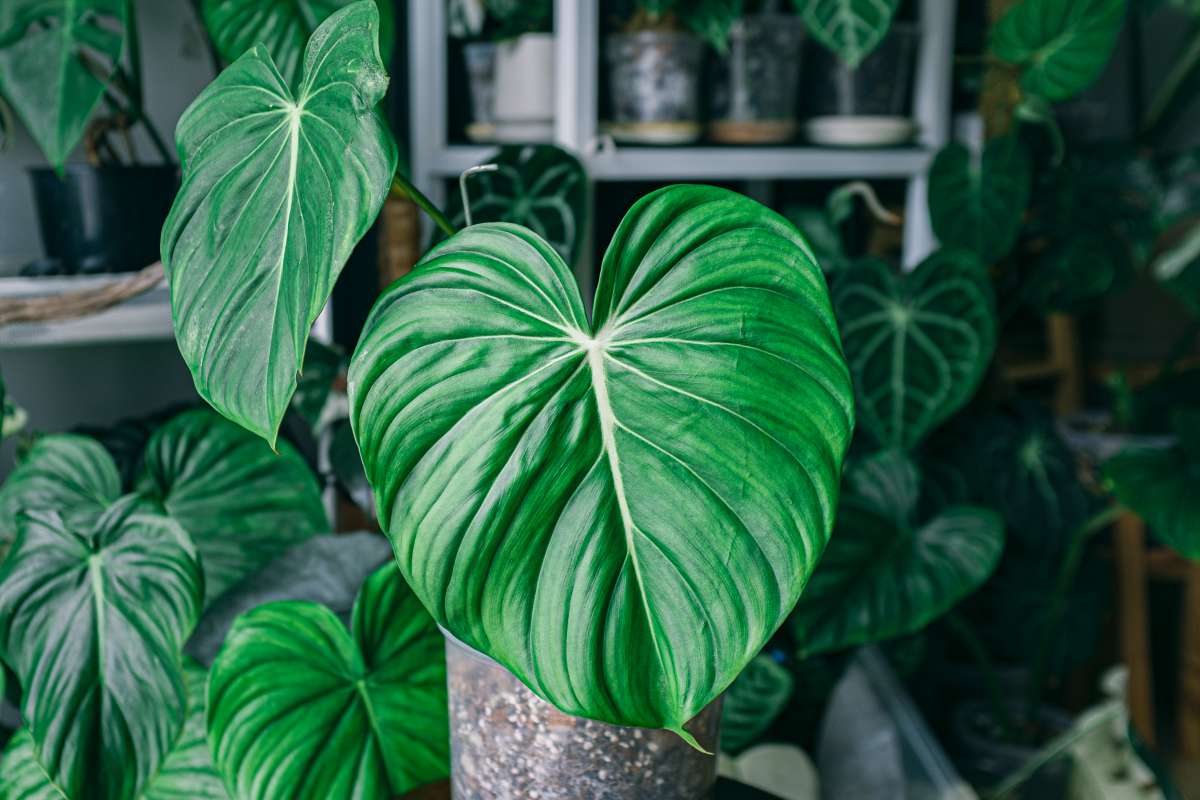
The best potting mix for a philodendron is one that ensures that there is both enough air and enough moisture around the roots of the plant. Our aroid potting mix has been specially created with Philodendrons and other aroid plants in mind. But if you feel more like taking a DIY path, you can create your own mix for your philodendron by mixing approximately equal parts of good grade perlite, bark, and high-quality potting soil.
Tip: Another thing to consider is getting a terracotta pot for your philodendron as terracotta allows air permeability around the roots. If you make the switch from a plastic pot to a terracotta one, ensure to also change your watering habits, as the soil inside a terracotta pot will dry much faster.
Can you grow philodenron in hydroponically? Yes, philodendron plans can be easily grown in water, LECA or pon. Alternatively, the majority of Philodendron plants can also be successfully grown in 100% sphagnum moss. If you opt to grow your philodendron in hydro or semi-hydro media, make sure to stay on top of their nutritional and PH needs though, as semi-hydro media don’t offer any nutrition and don’t have a natural buffer (as potting soil does).
4. How Much Humidity Does a Philodendron Need?
Philodendrons can be grown in an environment with normal room humidity if acclimatized to it. However, higher humidity levels (65%+) will promote the growth of your Philodendron and result in larger and more lush foliage, so consider pampering your plant with a humidifier. Just ensure that there is enough air circulation around it and that the water droplets are not directly landing on your philodendron’s leaves as fungal and/or bacterial issues might quickly present themselves.
In short: although a humidifier is not an absolute must for your Philodendron, you can use it to promote more lush growth if the humidity levels are too low in your home. You can use a hygrometer to measure the humidity in any room.
Their humidity and light preferences make them ideal plants to consider for your bathroom or kitchen, although a Philodendron would happily leave in any warm room really.
However, what is the most important factor when it comes to Philodendrons and their humidity preferences is stability. Stabile humidity levels are preferred over sudden rises and drops. Philodendrons can react negatively to sudden humidity drops, as can be the case in winter when heaters are used to warm a room. Therefore, make sure that your Philodendron is not placed closed to a heater. If the humidity is persistently too low, consider a humidifier.
Important: Ensure that your philodendron is not experiencing humidity shocks, eg: a sudden drastic rise in humidity, as this could lead to physiological stress and cause edema and cell rupture. A sudden humidity drop might result quite fast in dry edges on the leaves or yellowing and discoloration on the foliage.
5. How Often to Fertilize a Philodendron and Which Fertilizer is Best?

Fertilizing your Philodendron regularly is important as it will contribute to the overall health of the plant and result in the plant growing larger leaves. Remember, Philodendrons grow fast, so they consume the nutrients in the soil as they grow and you need to replenish them.
The best fertilizer for a philodendron: Philodendron plants need a fertilizer that includes both macro-and micronutrients. A simple NPK fertilizer will not do. So ensure that the fertilizer you choose for your philodendron also has trace minerals.
You could opt for a balanced fertilizer that has equal NPK ratios (eg: 10-10-10) or choose a fertilizer that is formulated for green leafy plants with a NPK ratio close to 3-1-2.
How often to fertilize a philodendron: that depends. During the growing season (spring and summer), Philodendrons need to be fertilized more often than during the autumn and winter season – unless your Philodendron is putting out crazy growth then.
You can use a slow-release fertilizer (by applying it on top of the soil or mixing it in the potting mix) at the beginning of the growing season and re-applying it (every 2-3 months) on top of the soil as indicated on the packaging. Make sure to water afterward.
Another way to fertilize your Philodendron is by using liquid fertilizer which will need to be used more often. Some prefer to give their philodendrons a full-strength fertilizer once per month during the growing season and once every 6-8 weeks during the dormant season. We prefer another method called the “weakly weekly” combined with slow-release fertilizers. This method involves giving between 10-25% of the fertilizer’s strength to our Philodendron plants each week for 3 out of 4 weeks per month during the growing season. We reduce this to twice per week during the colder months. The “weakly weekly” fertilization method works great as it makes sure that the plants are never deprived of important nutrients and since the roots are never exposed to high concentrations, reduces the risk of fertilization burn.
The best pH range for nutrient absorption for Philodendron plants is between 5.8 and 6.2. Use a pH meter to measure this value and adjust it after adding liquid fertilizer to water.
Important: To reduce fertilization burn: make sure that your Philodendron is not thirsty before applying liquid fertilizer. Always water your plants first and then apply fertilizer after they have had some time to drink.
6. Keep Your Philodendron’s Leaves Clean
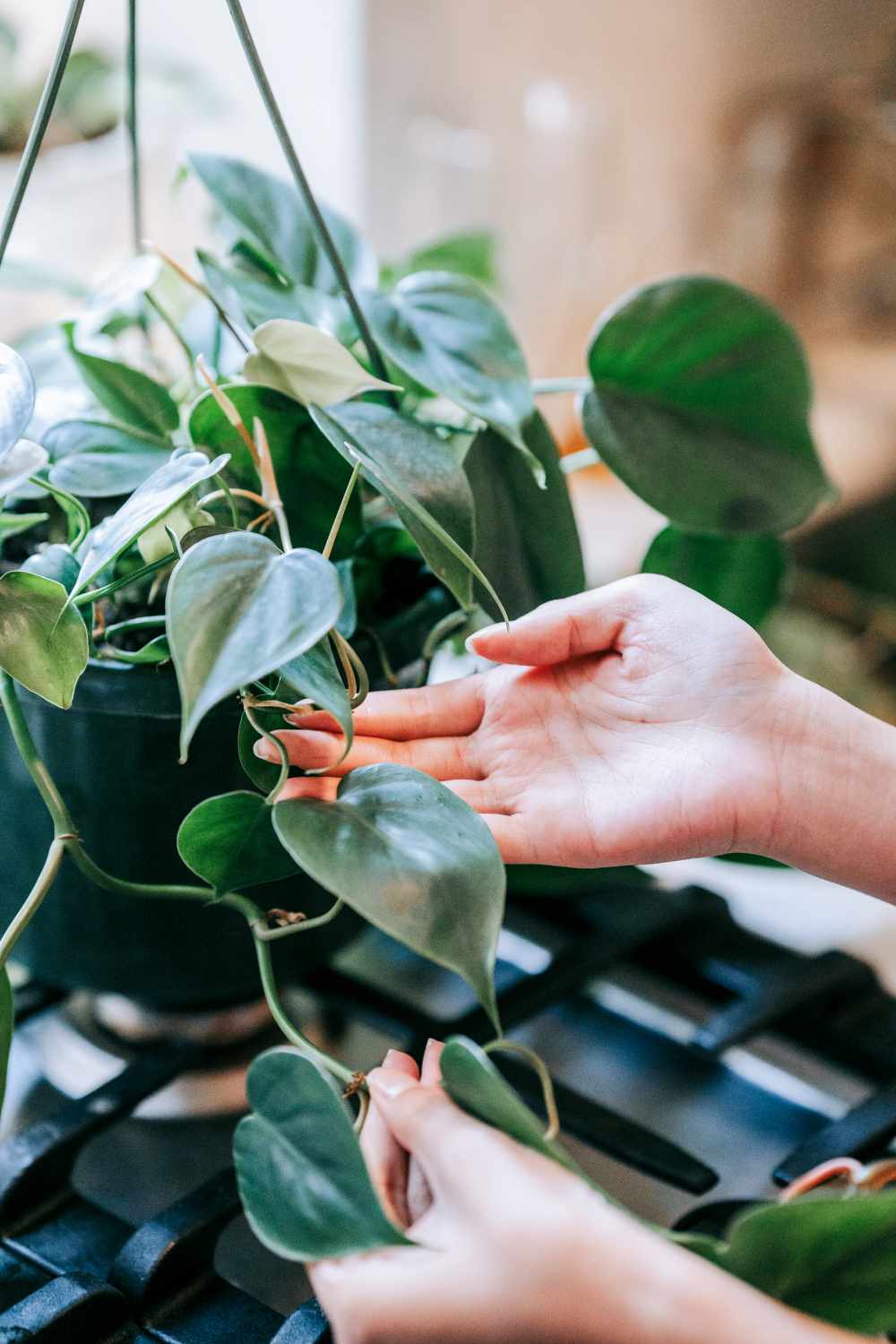
Some types of Philodendrons, especially the ones that have velvety leaves (eg: Philodendron Verrucossum) can become dirty and it happens rather quickly.
Make sure that your Philodendron’s leaves are kept tidy, shiny, and dust-free whenever possible. If your plant is small enough, you can give it regular showers when you see that dust has started accumulating on the leaves. If your Philodendron is too big for showers, however, you can clean its leaves with the help of a clean towel (or a brush) and a spray containing distilled or rainwater.
If you are getting your Philodendron’s leaves wet – the best time to do it would be in the morning as the plant will have sufficient time to dry afterward.
Ensuring that your Philodendron’s foliage is clean is important as it allows your plant to photosynthesize better and promotes transpiration. Somehow clean leaves discourage pests. In other words, another perk of cleaning your Philodendron’s leaves is that spider mites (who love dusty foliage) might be less encouraged to make your Philodendron their dinner buffet
7. The Best Growing Temps for a Philodendron
Are Philodendrons frost-resistant? Absolutely no. Think of the tropical rainforest where Philodendrons originate. There are definitely no snowmen to be found.
Can Philodendron live outside? Yes, but you need to bring it back in. If your Philodendron was happily growing outside during the warmer months, please bring it indoors for the colder seasons, as any temperatures below 10C (50F) will stop the growth of your Philodendron, and temperatures around freezing will kill the plant.
A Philodendron can tolerate temperatures in the following range: 10°C to 38 °C (50 °F to 100 °F) but wouldn’t feel very happy if kept at extreme conditions.In fact, your Philodendron will appreciate the same temperatures as you would and will feel at its best when grown at 18°C – 28°C (65°F – 82°F).
8. Climbing Support for Philodendron
There is not a one size fits all when it comes to whether to stake or not your Philo.
Depending on the type of Philodendron plant that you have and in what “shape” you choose to grow it, for some of them, staking is a must, for others, it’s an accessory and for the rest: not needed at all (I’m looking at you, Rio).
Remember how I mentioned that there are so many different Philodendron varieties exhibiting different growing patterns? Yup, that’s right. Some grow as vines, others hang and the third ones, well… they crawl I guess. (eg: Philodendron Gloriosum)
Let’s say you have a Philodendron El Choco or a White Princess, providing your plant with a climbing support pole, will result in bigger leaves and more structured growth.
However, some Philodendrons make amazing hanging plants (Eg: Hederaceum), in which case, a better investment would be a hanging pot or a macrame planter.
So whether you need to stake your Philodendron or hang it, it all depends on what particular Philo you’re growing at your home.
9. How to Identify and Manage Pests on Philodendron
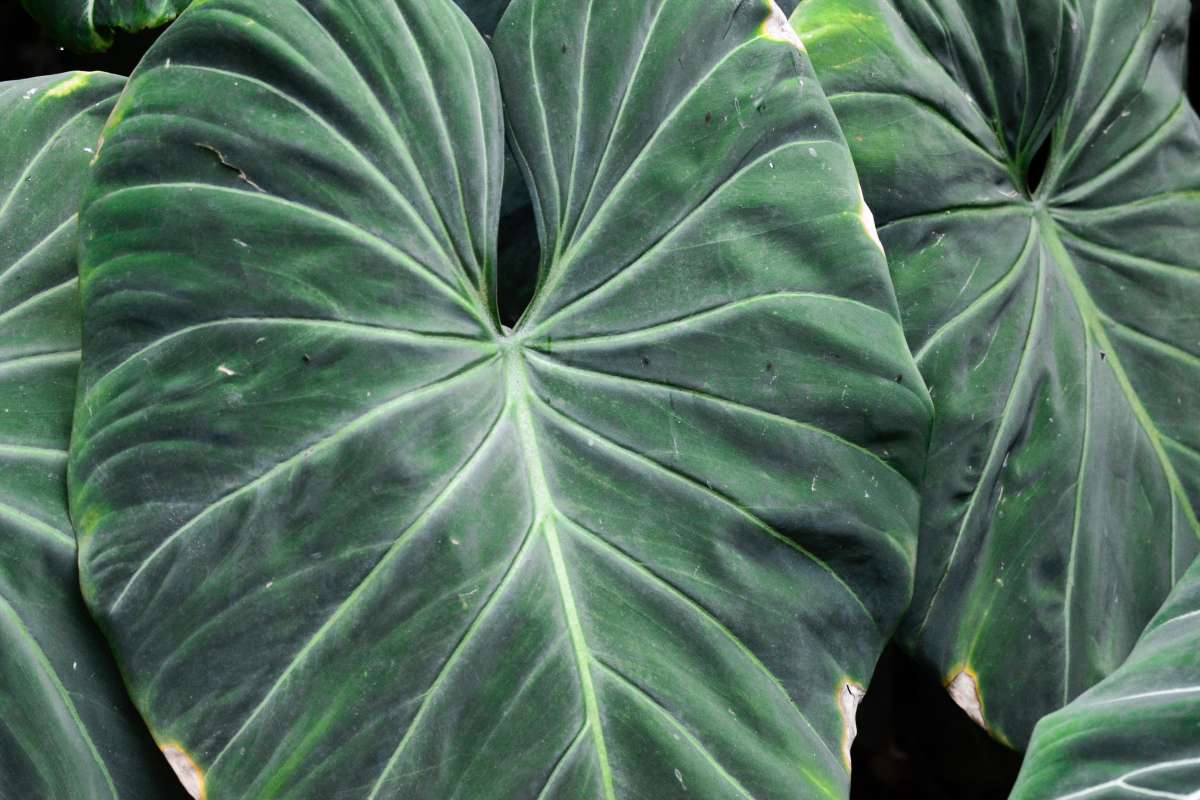
Philodendrons in most cases remain pest-free but let’s discuss when the odd bug lands on them and starts causing you to panic.
Spider mites and thrips are the most common pests that are especially attracted to Philodendrons. Thus, a good habit for any plant parent would be to inspect your plants regularly for any signs of pests. Once per week/two weeks is a good practice. Check extensively the underside of the leaves as that’s where more pests hide.
If you suspect that your Philodendron might be dealing with pests, it’s time to act. Our detailed step-by-step guide on how to identify and treat pests on a philodendron will guide you on how to get rid of the buggers once and for all.
But in short: if you suspect an infestation, isolate the plant. Give it a good shower and then opt to treat it with a natural pesticide that is not harmful to beneficial insects (eg: neem oil, alcohol solution) and repeat weekly until the problem has been erradicated. Chemical pesticides should be a last resort when dealing with a pest problem on houseplants due to their negative impact on beneficial insects and the environment.
10. How to Propagate Your Philodendron
Some Philodendrons can be so fast-growing, that soon enough, your little plantie might have overgrown the spot that you so carefully chose for it. No worries then, you can simply cut back the plant and propagate it.
First thing first, before you jump on your gardening pruners, ensure that your Philodendron is still growing and is not experiencing a dormancy spell. Propagating plants that are in their actively growing stage gives you the best chances of being successful at increasing your plant collection for free.
Philodendrons are mostly propagated through stem cuttings, although some can be just as easily propagated through division (read our detailed guide here). It is not so common to propagate a Philodendron through seeds at home (although that’s how they propagate themselves in nature) so I will skip that part.
Philodendrons, just like Monsteras, can be propagated by air layering. Air layering is a propagation method that goes in this order: first rooting, then cutting. Essentially, to air layer your Philodendron, you need to locate a node and then wrap it and the aerial roots around in damp sphagnum moss until you see roots growing. You have to keep the sphagnum damp (not soggy) continuously. After there is some root activity going on inside of the little sphagnum diaper, the part on the stem below where the roots have formed is separated from the mother plant and planted in its own pot.
Then comes the other, most commonly used Philodendron propagation method by pretty much everyone: stem cuttings’ propagation. It goes in the opposite direction of air layering: first you chop, then you root.
So how to propagate your Philodendron through stem cuttings? It’s quite easy.

Simply locate a node and cut below it on the stem. Make sure that you are using a sharp cutting tool that has been properly disinfected with 70% rubbing alcohol. Let the wound callus before you proceed with rooting it.
NB: You cannot propagate a Philodendron without a node. A leaf that is not attached to the stem, a random aerial root on the stem, or just a portion of the stem that has no nodes will not grow into a new plant and is just a chunk of plant tissue.
Not sure what a node is or how to find one on your Philodendron? I got you. Here is a detailed guide on Stem Cuttings Propagation so you don’t have to guess.
You can propagate your Philodendron cutting by planting it directly in a soilless potting mix, using sphagnum, perlite, or Leca as your propagation media, or going good old-fashioned water-propagation mode. If you decide to water-propagate your Philodendron, make sure to change the water every couple of days or so, and if possible: use distilled or rainwater.
However, from personal experience, I prefer to stay away from water-propagation when it comes to Philodendron plants. I found that they root best when sphagnum moss or an aroid potting mix is used.
Why is water-propagation not ideal for Philodendrons? 1. Stem rot. 2. Water roots are not the same as soil roots, and once the plant is transplanted into soil, guess what happens: utter shock and loss of roots. Bummer. 3. It is unnatural.
Need a step-by-step guide on how to propagate your Philodendron through stem cuttings and how to root them successfully? Then make sure to check this article here on Propagation Through Stem Cuttings Made Easy.
How long does it take for a Philodendron cutting to root? It depends. But the average time that it would take for a Philo cutting to form roots is a good month. If there is new growth on your cutting, it is a great sign that it will most likely survive and will soon turn into a lush plant. Make sure to keep your cuttings in a warm and bright location for optimal propagation success. Consider a grow light and a propagation mat if needed.
The most common problem that you might have to deal with while propagating your Philodendron is a stem and root rot. Rot can be managed if caught early-on. Here is a detailed guide on Identifying and Treating Rot on Plants.
11. How to Repot Your Philodendron
Before you start planning how you are going to replant your Philodendron in a gorgeous new pot, make sure that your sweetheart plant actually needs a change of pot and that it is actively growing. If your Philo has just arrived in the mail – wait and don’t do any root-related actions for at least 2 weeks so that your new plant family member would have had some time to breathe.
How often do Philodendron need to be repot anyway? Usually, it would take at least 2 years before your Philodendron has outgrown its pot and would be showing signs of being root-bound. However, if yours is a fast-grower, that time might be much less. Make sure to check our guide on what are the signs that your plant will benefit from repotting and the best way to do it, here.
In short: if you have decided that your Philo needs to be planted in a new pot right about now, then ensure that the new pot is not too big. Ideally, you would go maximum 2 sizes bigger (although 1 size bigger is much much better). Prepare yourself with a chunky aroid potting mix and be extremely careful while uprooting your Philodendron. Some of them have a very delicate root system and you wouldn’t want to hurt it. Remove as much of the old soil as possible but stop if you start disturbing the root ball too much. Plant your Philodendron in its new pot and don’t forget to give it a good drink.
Next on, allow your plant to settle in its new pot and expect some slowed-down growth for the first 1-2 weeks, this is normal. As soon as your Philodendron has acclimatized to its new home, it will continue growing just as before.
12. Variegated Philodendron
How to deal with brown spots on Variegated Philodendrons? Brown sections appearing on the foliage (especially on the most variegated parts – aka your favorite white, yellow or pink parts) of variegated Philodendrons are a common issue, although not as common as with Monsteras. You are not the only one and should not blame yourself.

In general, variegated plants are more ‘fragile’ compared to their green cousins and will react to stressors faster. Having brown spots on the variegated parts of a leaf is just your Philodendron’s way of saying: hey, something’s off, please, fix it!
As mentioned, variegated Philodendrons need more light. The reason being is that they are not able to photosynthesize as efficiently as their green cousins due to the less amount of chlorophyll in their leaf cells. Think of the variegated parts as containing minimum amounts of (and sometimes no) chlorophyll. Therefore, it is your job to balance this ‘disadvantage’ by providing your variegated Philodendron with more light.
Inadequate watering, temperature stress, and sudden humidity drops are other reasons why your variegated leaves might be turning brown.
The brown parts themselves aren’t bothering your Philodendron but if they are bothering you, you can simply remove them with the help of a disinfected scissor. Make sure to not cut into any healthy tissue though so as not to risk introducing potentially harmful pathogens into the plant.
13. Philodendron Care: Common Plant Issues
This part is all about: how to keep your philodendron healthy. You will notice if your Monstera is not feeling particularly well by the appearance of dull or yellow leaves.
Philodendrons are resilient plants and they can tolerate for quite some time less than ideal growing conditions. However, there are issues that even your Philodendron might not be able to handle on its own.
An occasional yellow leaf on your plant is absolutely normal as old leaves die. But if you notice that leaves on your Philodendron are suddenly turning yellow one after another, and your plant just doesn’t look like it’s doing too good, the reason could be overwatering. However, overwatering is just one reason amongst many as to why your Philodendron might be feeling under the weather. Read out our detailed guide on the most common causes of leaves turning yellow on houseplants and what to do to treat them.
If your Philodendron is not feeling so well due to environmental factors, correcting the issue will usually resolve the problem and your plant will be back to its old, healthy self in no time.
Aside from environmental factors, there are also fungal and bacterial diseases that can affect plants. These conditions usually appear on the leaves as spots, and in the case of fungal ones: there are also spores on top. Fungal and bacterial diseases flourish in wet conditions where adequate airflow is limited. That’s the main reason why we aren’t advocates of misting a Philodendron, especially not during the colder months.
Philodendrons are also prone to fungal infections which can be treated with a suitable fungicide. Stem rot and root rot are other common issues with Philodendrons as most of them suffer from overwatering and not being planted in the proper soil type. Thus, it is imperative to take utmost care to not give your Philodendron too much water.
If you suspect that your Philodendron is dealing with a fungal problem, isolate the plant immediately from the rest of your collection as fungal spores can spread fast. In some cases, it is best to remove any affected foliage and dispose of them immediately before proceeding with a fungicide treatment. Re-apply as advised.
To prevent fungal and bacterial diseases attacking your Philodendron plants, always make sure that the plant’s needs are met as good as possible as healthy plants are more resilient both to pests and diseases. To avoid fungal infections on your Philodendrons, ensure that there is enough airflow around the plant and avoid getting the foliage wet.
Stunned Growth of a Philodendron
Did your Philodendron suddenly stopped growing and now you are wondering why is the plant doing so? As I mentioned previously unless there is a temperature drop, Philodendron plants that grow indoors don’t really take a break and while other plants become dormant during the colder seasons, Philodendrons might just slow their growth down or not react at all. That’s why a red bulb should flash if your Philodendron stops growing out of the blue.
Does your Philodendron seem to just have stopped growing? Or the plant is having a hard time getting out the new leaves and as a result, they look deformed?
Then it could be that your Philodendron is either not receiving enough light, the humidity is low or it needs to be fertilized more regularly. Consider a grow light, a humidifier, or a fertilizer to help your Philodendron so it can go back to its usual growing self.
14. Can You Grow Philodendron in a Terrarium?
Do you consider trying to grow your Philo in an jar, i.e. a terrarium? Well, maybe you just might succeed. However, be warned that your Philodendron will most likely outgrow its terrarium way too fast for your liking. If you still decide to give it a shot, consider a philodendron seedling that would take a while to establish into a fully grown plant monster.
Have you decided that you would like to grow a tiny Philo in a terrarium? Let us make things easier then. We have a DIY Terrarium Set that includes substrates that you would need to start your terrarium journey.
On the other hand, if you are just getting started with growing plants in a terrarium, Succulents & Cacti might be a better choice for beginners.
17. Are Philodendron Toxic?
Are Philodendron plants pet-friendly?
No, unfortunately, your Philodendron is considered toxic or poisonous if ingested. This is because the leaves of your sweetheart plant contain crystals called calcium oxalate. These crystals are known to cause irritations if ingested and can result in vomiting, swelling in the mouth and lips, abdominal pains and discomfort, and excessive salivation. Although these symptoms sound severe, the toxins are, fortunately, not detrimental to your or your pet’s long-term health, but you should avoid placing your Philodendron in a location that your pet can easily reach. And if you have small children, keep your Philodendron away from curious tiny fingers for sure!
Philodendron Care: Final Thoughts
Philodendrons are amazing plants that come in a variety of colors, growing behaviors, and leaf patterns. There are so many different and unique varieties that there is something for everyone to fall in love with.
Philodendron plants are also incredibly easy to care for and are great plants for beginners as they are tolerant of almost any light scenario, require medium watering, and will forgive you if you can’t provide them with ideal growing conditions. On top of that, these plants are visually stunning and are considered fast growers, making them perfect candidates for propagation.
Hopefully, this detailed Philodendron care guide answered important questions that you might have about the ideal growing requirements of your Sweetheart plant. Have fun exploring the endless varieties of Philos that seem to be out there.

